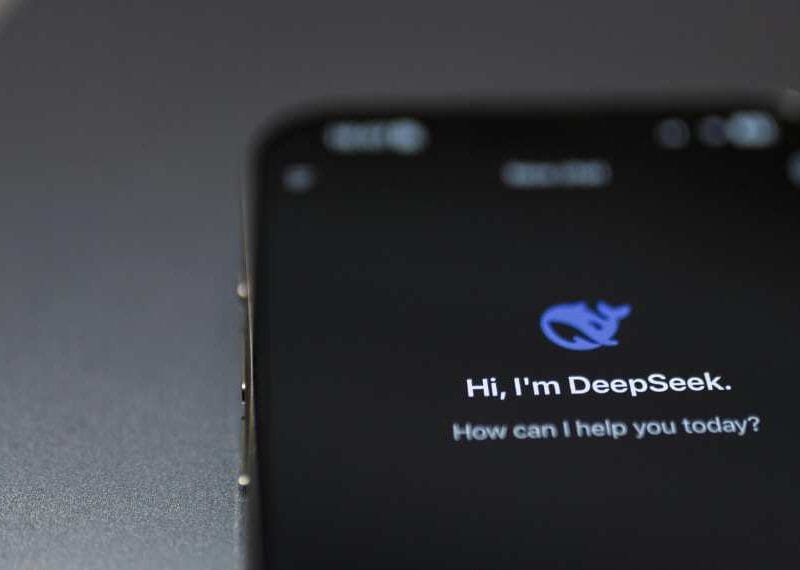AI’s Big Pivot: Thought Leaders on Rapid Adoption in Tech
As generative AI shifts from skepticism to integration, organizations are rapidly adapting to harness its potential.
This Techronicler article compiles insights from business leaders, thought leaders, and tech professionals on how their organizations have evolved in adopting AI.
Experts highlight moving from outright bans to structured frameworks with clear policies, training, and sandbox environments.
AI now streamlines workflows, from content creation to complex coding, while enhancing decision-making and creativity.
Cultural shifts are equally significant, with teams embracing AI as a collaborative tool rather than a threat.
These strategies demonstrate how organizations are balancing innovation with responsibility, transforming AI from a disruptive force into a catalyst for efficiency and growth.
Read on!
Controlled Adoption Boosts Campaign Efficiency
According to Cisco, 27% of organizations rejected generative AI outright. We were one of those companies, but our team quickly found work-arounds, so we learned it was useless to reject it altogether.
Within a few months we were no longer rejecting AI usage but adopting it in a controlled manner: we documented policy for usage, held internal training sessions, and created a “sandbox” environment.
This allowed us to address compliance but the benefit to the organization could be measured: one team in marketing used AI on their work and reduced their drafting time for a campaign by nearly 40% with guardrails in place.
As co-founder of All-In-One-AI, I would advise anyone to not waste energy on outright restriction and invest upfront in guardrails and employee education: it allows you to convert resistance into responsible adoption and if employees are using AI regardless of your position, why not transform it from shadow usage to known productivity?

Dario Ferrai
Co-Founder, All-In-One-AI
Streamlined Tasks Enhance Team Morale
Generative AI’s role in our business has evolved from initial doubt to structured adoption.
At first, we dismissed it because we worried it might confuse customers or weaken trust. Over time, we saw its value in drafting training content, building FAQs, and preparing product descriptions. Every piece still goes through expert review but the speed gains are undeniable. What once took days now takes only hours, giving our teams more time to focus on complex tasks that require deeper knowledge.
The cultural shift has been equally important. Employees no longer see AI as a threat but as an assistant that simplifies repetitive work. This change in perspective has improved morale and boosted productivity.
For us, the true progress has been learning to balance AI’s speed with our expertise in a responsible and effective way.
Collaborative Tools Accelerate QA Innovation
At QASolve AI, we’ve seen firsthand how quickly generative AI has moved from skepticism to necessity.
Early on, concerns about accuracy and reliability kept many teams from experimenting with GenAI in software testing.
Today, adoption has accelerated as organizations realize it can drastically reduce repetitive QA work while improving release velocity. Instead of replacing people, GenAI in our platform acts as a collaborator, automating test creation, catching edge cases, and freeing engineers to focus on innovation.
The shift has been less about “whether” to use AI and more about “how” to use it responsibly, with transparency and oversight. That evolution has made AI a trusted enabler of creativity and growth, not just efficiency.

Justin Gaffney
Digital Marketing Manager, QA Solve
Coding Shifts to Instructive Automation
Our organization has adopted generative AI from the very beginning. Within the last few months, however, it has gradually gone from a helper on the side for the “edge cases” of work to a critical part of our day-to-day development of our core product as a software engineer.
We have always used LLMs when drafting external communications and legal documents, but it was not good enough to 80% of our development work on our very original and complex code base with tens of thousands of lines of code.
The tool-use updates in Cursor and the introduction of Opus 4.1 in recent months, however, brought about paradigm shifts in how we function as a technology company. 90% of our development now shifted from typing out the code to instructing an AI to make changes on a mass scale.
Although manual fixes afterwards are still required sometimes, in the rare cases where I do write code from scratch, I know from the bottom of my heart that I’m most likely not using my time in the most efficient way.

Harvey Hu
Co-Founder & Chief Technology Officer, General Agency
Briefings Empower Strategic Decision-Making
At The Voice of Your Customer, we quickly realized that whether we approved it or not, employees and contractors were already experimenting with generative AI.
That prompted us to establish a formal policy to guide responsible use. At its core, our policy requires every AI-generated output to be backed by authoritative sources, with clear attributions, to maintain the integrity and trust our clients expect.
Like many small businesses, we leverage generative AI to streamline operations and spark creativity—but one of our most impactful uses is a daily morning briefing tailored to each role.
As CEO, my customized digest includes industry news, RFP releases, regulatory updates, online mentions, trending keywords, stock prices, and other insights that help me lead strategically.
In just a short time, generative AI has evolved from being questioned to becoming an indispensable tool for enhancing both efficiency and decision-making in our organization.
Technology Normalizes as Essential Infrastructure
The story of AI isn’t rejection or blind adoption — its rapid normalisation.
Now, gen AI sits in the same bucket as email or search engines: essential but regulated. The speed of that evolution is what’s truly remarkable — rarely has a workplace tool gone from taboo to table stakes this quickly.

Dorian Menard
Founder & Business Manager, Search Scope
Structured Framework Sparks Creative Ownership
What started as hesitation quickly turned into structured experimentation. Instead of banning generative AI, we created an internal framework: guidelines, training, and clear use cases.
That shift allowed the team to explore AI safely—first for content ideation and SEO research, then for automations and prototyping.
Adoption wasn’t just technical, it was cultural. Teams are now encouraged to test, document, and share results. AI isn’t replacing our expertise—it’s enhancing it, making room for faster delivery and more creative thinking. The result? Less fear, more ownership, and real innovation driven from the inside out.
Culture Shift Turns AI Limits Into Opportunities
Things have evolved a lot in our organization. What started as skepticism and strict limits on generative AI quickly turned into curiosity once we saw how much time it could save in everyday tasks. Teams began experimenting in controlled ways, and it became clear that the risks could be managed with good oversight and clear guidelines.
Now, AI is integrated into workflows across multiple departments. It’s not seen as a shortcut, but as a support tool that helps us move faster and focus on higher-value work. The big change is cultural—people have shifted from asking “Should we use AI?” to “How can we use it smarter?”
Automation Empowers Non-Tech Workflow Creation
Our approach to generative AI has evolved rapidly. Initially, we focused on risk management and compliance. Now, we leverage AI for workflow automation and data insights.
For example, we implemented exception funnels to route complex queries to human operators. This reduced response times significantly and improved team efficiency. We saw a noticeable decrease in escalations, enhancing our operational performance. Stakeholders in ops and finance benefited from faster decision-making and better resource allocation.
It also allowed non-technical folks like myself to build internal tools, connect systems and tools, and truly empower non-technical people to build tools to remove bottlenecks and scale themselves.

Jared Grubka
Co-Founder & COO, Faliam
On behalf of the Techronicler community of readers, we thank these leaders and experts for taking the time to share valuable insights that stem from years of experience and in-depth expertise in their respective niches.
If you wish to showcase your experience and expertise, participate in industry-leading discussions, and add visibility and impact to your personal brand and business, get in touch with the Techronicler team to feature in our fast-growing publication.















